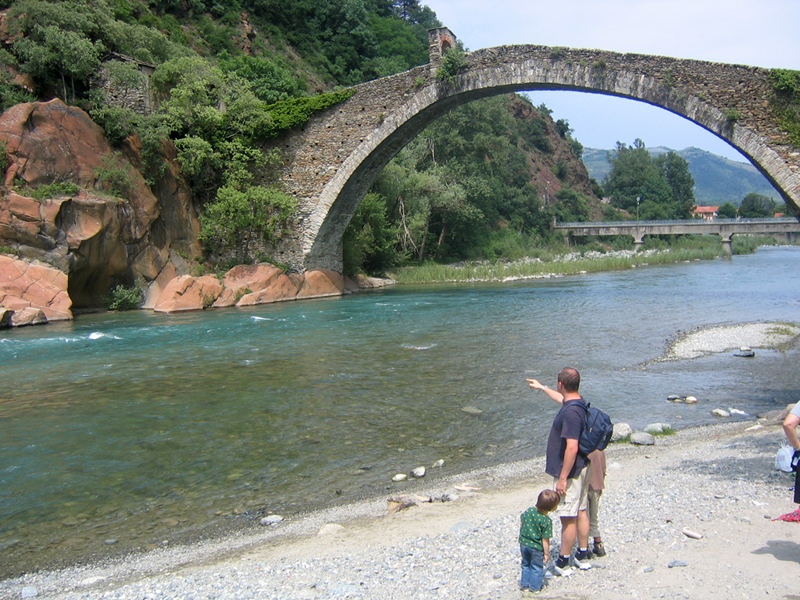Giant's Kettles (Marmitte dei Giganti)
In very ancient times, Mt. Basso and Mt. Buriasco were connected. Behind them, in the basin of Germagnano, there was a large lake collecting the waters from the mountains. They slowly opened a passage in the mass of rock and earth. The signs of the erosion can be seen in the rocks immediately upstream Ponte del Diavolo, on the left bank, behind St. Rocco Chapel. They are the so-called "giant's kettles", geomorphological phenomena dating back to the Quaternary period. There are 21 of them scattered at different altitudes for 18 meters from the level of torrent Stura. They were studied for the first time in 1882 by Francesco Virgilio from the University of Turin.
The smaller kettles are situated behind the chapel, while the "big kettle" is still partly submerged by water and undergoes an active process of mechanical erosion, due to the whirls caused by the narrowing of the gorge and by the action of river pebbles and sand during floods.
Popular imagination called them "ramine" or pots, since according to the legend they were used by giants or by the devil to cook soup.






